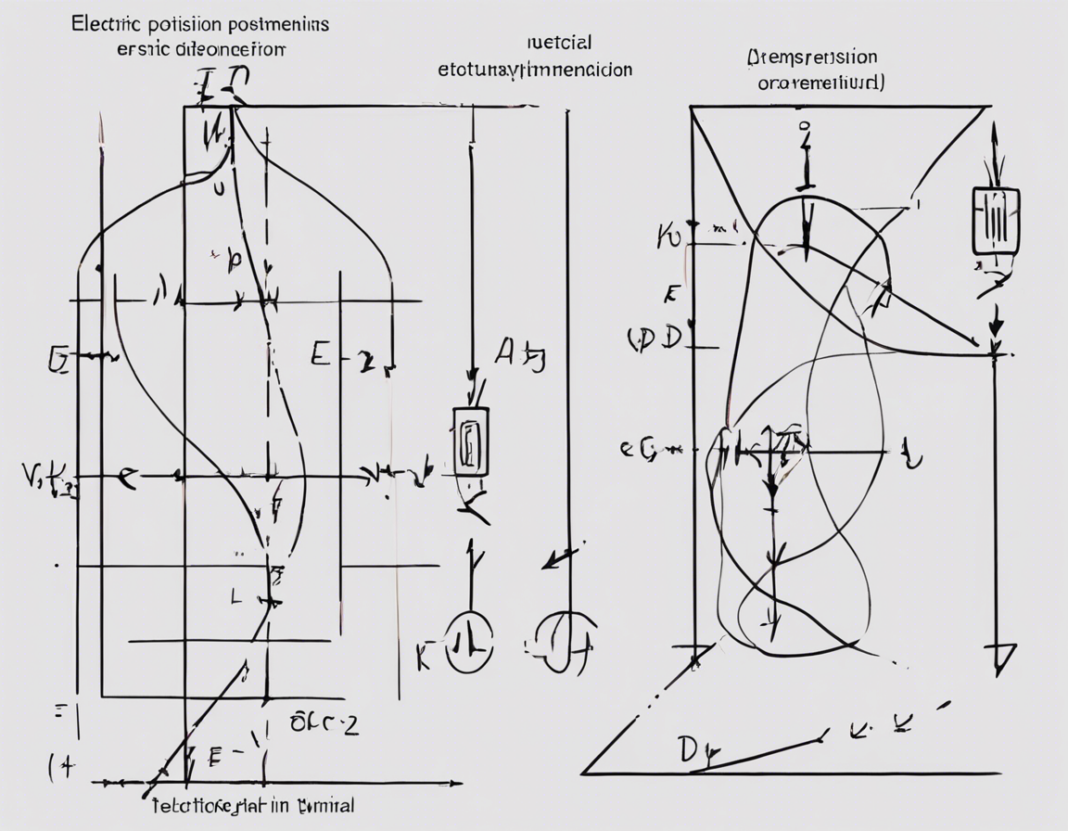Electric potential is a fundamental concept in the field of electromagnetism that plays a crucial role in understanding the behavior of electric fields, charges, and circuits. In this article, we will delve into the dimension and definition of electric potential, exploring its significance and applications in various contexts.
Understanding Electric Potential
Electric potential, also known as voltage, is a scalar quantity that represents the amount of potential energy per unit of charge at a specific point in an electric field. It is a measure of the work done in bringing a unit positive charge from infinity to a given point in the field without accelerating it. Electric potential is denoted by the symbol V and is measured in units of volts (V).
Dimension of Electric Potential
The dimension of electric potential is derived from its definition as the work done per unit charge. The formula for electric potential is given by:
[V = \dfrac{W}{q}]
Where:
– V is the electric potential,
– W is the work done in moving the charge,
– q is the magnitude of the charge.
Since work is measured in joules (J) and charge is measured in coulombs (C), the dimension of electric potential can be expressed as:
[V = \dfrac{J}{C}]
This can be further simplified using the fundamental units as:
[V = \dfrac{kg \cdot m^2}{s^2 \cdot A}]
Therefore, the dimension of electric potential is [M^1 \cdot L^2 \cdot T^{-3} \cdot I^{-1}].
Significance of Electric Potential
Electric potential serves as a fundamental concept in understanding the behavior of electric fields and charges. It provides valuable insights into the distribution of charges, the flow of current in circuits, and the interactions between charged particles. By studying electric potential, engineers and physicists can analyze and design various electrical systems, devices, and technologies.
Applications of Electric Potential
The concept of electric potential finds diverse applications in different fields, including:
1. Electrostatics: Electric potential is crucial in studying the behavior of static charges and electric fields in systems.
1. Electric Circuits: In electrical circuits, differences in electric potential drive the flow of current through various components.
1. Capacitors: Capacitors store electric potential energy and are vital components in many electronic devices.
1. Electrochemistry: Electric potential plays a key role in understanding chemical reactions involving the transfer of electrons.
1. Medical Devices: Electric potential is utilized in various medical devices such as pacemakers and electrocardiogram machines.
Calculating Electric Potential
The electric potential at a point in an electric field can be calculated using the formula:
[V = \dfrac{k \cdot q}{r}]
Where:
– V is the electric potential,
– k is Coulomb’s constant ((8.99 \times 10^9 Nm^2/C^2)),
– q is the magnitude of the charge creating the field, and
– r* is the distance from the charge.
By understanding the electric potential at different points in a system, researchers and engineers can analyze the behavior of charges and design efficient electrical systems.
FAQs about Electric Potential
- What is the relationship between electric potential and electric field?
-
Electric potential is related to the electric field by the equation: [E = – \dfrac{dV}{dr}], where E is the electric field and V is the electric potential.
-
Can electric potential be negative?
-
Yes, electric potential can be negative, indicating a decrease in potential energy as a positive charge moves towards a source of negative charge.
-
How is electric potential different from electric potential energy?
-
Electric potential is the potential energy per unit charge at a point in an electric field, while electric potential energy is the total potential energy of a system of charges.
-
What is the significance of equipotential surfaces in electric potential?
-
Equipotential surfaces are surfaces on which the electric potential is constant. They help visualize the distribution of electric potential in a field and the direction of electric field lines.
-
Why is understanding electric potential important in designing electronic devices?
- Understanding electric potential is critical in designing electronic devices to ensure proper functioning, efficient energy transfer, and safe operation of the devices.
In conclusion, electric potential is a fundamental concept in electromagnetism, providing valuable insights into the behavior of charges, electric fields, and circuits. By understanding the dimension and definition of electric potential, researchers and engineers can apply this knowledge to diverse applications, ranging from electrostatics to medical devices, contributing to advancements in technology and science.






